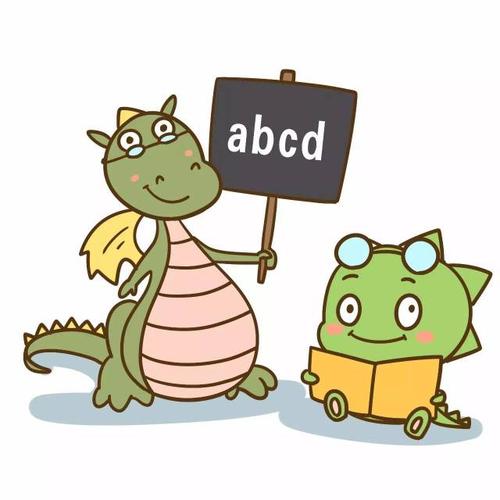计算机专业毕业论文和开题报告怎么写
.jpg) 此二子者
此二子者 口中有珠
口中有珠
开题报告由于开题报告是用文字体现的论文总构想,因而篇幅不必过大,但要把计划研究的课题、如何研究、理论适用等主要问题说清楚,应包含两个部分:总述、提纲。 1 总述开题报告的总述部分应首先提出选题,并简明扼要地说明该选题的目的、目前相关课题研究情况、理论适用、研究方法、必要的数据等等。2 提纲开题报告包含的论文提纲可以是粗线条的,是一个研究构想的基本框架。可采用整句式或整段式提纲形式。在开题阶段,提纲的目的是让人清楚论文的基本框架,没有必要像论文目录那样详细。3 参考文献开题报告中应包括相关参考文献的目录4 要求开题报告应有封面页,总页数应不少于4页。版面格式应符合以下规定。开 题 报 告 学 生: 一、 选题意义 1、 理论意义 2、 现实意义 二、 论文综述 1、 理论的渊源及演进过程 2、 国外有关研究的综述 3、 国内研究的综述 4、 本人对以上综述的评价 三、 论文提纲 前言、 一、1、2、3、
计算机专业毕业论文开题报告怎么写
 梦使
梦使 灯
灯
一 、选题背景及研究的目的和意义1.1 课题来源图书信息的管理是图书馆经常遇到的问题,尤其是当今高校的图书馆更为突出。近年来高校招生规模的逐步扩大和认识制度的改革,在学生认识将不断增加,而管理人员则相对减少。给学校的图书馆管理也带来了巨大的压力,早期的手工图书管理方式已经不能满足日益增长的图书馆借阅需求。因此在计算机飞速以展的今天,就用库技术实现图书信息的管理是可行而必要的工作。1.2 选题背景图书管理系统是为了管理图书借阅情况等信息而设计的。学校作为一种信息资源的集散地,包含很多的信息数据的管理。现今,有很多的学校都是开始使用,甚至尚未使用计算机进行信息管理。根据调查得知,他们以前对图书信息管理的主要方式是基于文本、表格等纸介质的手工处理,对于学生借阅情况的统计和查询等往往采用对人工检查进行。数据信息处理工作量大,容易出错;由于数据繁多,容易丢失,且不易查找。总的来说,缺乏系统,规范的信息管理手段。尽管学校都有计算机,但是尚未用于信息管理,没有发挥它的效力,资源闲置比较突出,这就是图书管理信息系统的开发的基本环境。数据处理手工操作,工作量大,出错率高,出错后不易更改。一般图书借阅情况是记录在文件上,图书馆的工作人员也只是当时对它比较清楚,时间长了,如再要进行查询,就得在众多的资料中翻阅、查找了,造成查询费时、费力。如要对很长时间以前的参加借阅图书情况进行查询就更加困难了。1.3 研究目的本系统使用电脑安全保存、快速计算、全面统计,实现图书管理的系统化、规范化、自动化。1.4 研究意义我们认为有必要建立一个图书管理系统,使图书管理工作自动化、规范化,系统化,程序化,避免图书管理的随意性,提高信息处理的速度和准确性,能够及时、准确、有效的查询和注销等情况。二、国内外研究现状管理信息系统 (MIS) 是集成了计算机网络技术、通信技术、信息处理技术,对信息进行收集、传递、存储及加工处理,用于辅助决策进行事务管理的一种人机交互的智能化计算机系统。 MIS 的发展与计算机网络技术的发展是紧密相关的,随着 Internet/Intranet 技术的广泛应用, MIS 的体系结构也发生很大的变化,从以往基于 C/S 结构的数据访问及安全体系发展到当前的基于 B/S 结构体系。计算机网络技术的发展大体上经历了三个阶段:一是以 Mainframe 为中心的集中处理式网络,即主机 / 终端模式;二是以 Client/Server 模式为中心的分布式计算处理网络系统,即客户 / 服务器模式;三是目前正兴起的 Intranet 模式,即 Browser/Server 模式,它是以基于 WEB 技术为特征的。现代管理信息系统即是建立在 Intranet 的基础之上。本设计是由 VisualC++ 连接 SQL2000 数据库联合开发,选用结构化生命周期法与原型法相结合的方法开发。所完成的图书管理系统软件是一功能比较完善的数据管理软件,具有数据操作方便高效迅速等优点。该软件采用功能强大的数据库软件开发工具进行开发,具有很好的可移植性,可在应用范围较广的 WINDOWS 系列操作系统上使用。三、主要研究内容主要工具: WINDOWSXP+VisualC++ +SQL 2000本次设计利用微软公司开发的高级数据访问对象 ADO 实现数据库的管理与访问,完成基于 C/S 结构 的图书管理系统。研究目标:(1) 功能方面,主要是对信息进行添加、修改、删除等操作,并能对信息进行合理的分类,对用户进行分类,如管理员、会员,并对每类的用户进行功能的限制,例如管理员可以发布信息,并对信息进行添加、修改和删除,而会员可以浏览信息,但不能对浏览的信息进行修改和删除。(2) 性能方面,由于信息发布系统拥有不同类型的用户,不同的用户拥有不同的功能,所以在登录的过程中要有一定的安全性,因此对各类用户设置密码就变得非常重要了。比如会员和管理员必须通过用户名和密码正确的登录才能进入管理系统,对自己的个人信息进行添加和修改,管理员也可以对信息进行添加、修改、删除等操作。四、课题进行的技术路线、开发环境及方法4.1 开发环境本次的毕业设计采用了文献研究法。文献研究主要是通过阅读有关毕业设计选题的技术方面的文献,根据现阶段的发展状况,选择适当的技术完成本次的毕业设计,以下是对文献研究法的重要体现:(1) 需求分析 : 对于银行大厅工作流程进行详尽的了解 . 并了解银行人员的具体需求 . 这是对整个管理系统的软件规模定位 , 对该软件的实用性及粗细程度有着重要影响 .(2) 概念结构设计 : 通过对银行大厅工作流程的详细了解建立一个工作流程的初步流程图 . 根据事物间的关系建立 E-R 图 . 便于建立数据库 .逻辑结构设计 : 通过了概念设计便很自然的过渡到这一环节 . 将 E-R 图转化成关系模式并对数据模型进行优化(3) 物理设计 : 该过程对数据库的结构优化 , 使得物理结构最优 , 存储空间利用率高 , 事物相应时间小 , 事物吞吐率大 .(4) 过程实现及维护 : 实现模型各个环节的具体编程实现 , 并进行调试 . 在完成了整个软件的开发工作后应该对软件进行维护 .详细系统环境如下 开发语言: VisualC++ 后台数据库: SQL 2000开发环境运行平台: Windows XP(SP3) CPU :奔腾 2.0Ghz 以上 内存: 1G分辨率:最佳效果 1024 × 768 。4.2 重点解决的问题技术方面:(1) 通过网络和书籍掌握对工具软件的使用。(2) 通过参考文献和有关书籍学习完成毕业设计所需要的技术。 实现方面:(1) 信息发布系统要有一定的安全性主要以登录的过程实现。(2) 前台界面与后台界面的合理规划。(3)数据库设计的完整性,这个过程关系到以后信息发布系统的动态更新。 (4)主要功能的实现。如信息的添加、删除、更改等操作。
计算机专业毕业论文开题报告中完成论文的条件、方法和措施怎么写
 陆之鱼
陆之鱼计算机专业毕业设计开题报告怎么写?
 节用
节用 第五街
第五街
一、本科学生毕业论文的目的和内容nbsp;本科学生在毕业之前必须做毕业论文,其目的是通过毕业论文,让学生独立开发一个具体的计算机应用项目,系统地进行分析总结和运用学过的书本知识,以巩固本科阶段所学的专业理论知识,并给予一个理论联系实际的机会。nbsp;为了便于实施和管理,规定网络学院计算机相关专业本科学生毕业论文主要以开发一个管理信息系统为毕业实践的课题,每个毕业生通过独立开发一个具体的管理信息系统,掌握开发一个比整完整的管理信息系统的主要步骤,并从中获得一定的实际经验。nbsp;二、管理信息系统开发的主要步骤nbsp;管理信息系统开发的主要步骤及各步骤的基本内容如下:nbsp;1、nbsp;系统分析nbsp;主要工作内容有以下几项:确定系统目标,系统可行性分析nbsp;2、nbsp;系统调查nbsp;系统的组织结构、职能结构和业务流程分析。其中系统的组织结构图应画成树状结构。nbsp;系统业务流程分析、业务流程图nbsp;3、nbsp;数据流程分析nbsp;数据流程图(系统关联图、顶层图、一层数据流图、二层数据流图)、数据词典、代码设计nbsp;4、nbsp;管理信息系统的功能设计nbsp;系统的功能结构图,每个功能模块的主要工作内容、输入输出要求等。nbsp;系统控制结构图nbsp;5、nbsp;数据库设计nbsp;概念模型设计:实体、实体间的联系、E-R图nbsp;关系模式设计:E—R图-amp;gt;关系模式的转换规则nbsp;关系模式nbsp;数据库表设计:数据库表结构nbsp;6、nbsp;系统物理配置方案nbsp;7、nbsp;人机界面设计nbsp;8、nbsp;模块处理概述nbsp;9、nbsp;系统测试和调试:测试计划、测试用例、测试结果nbsp;三、开发工具和注意事项nbsp;1、开发工具nbsp;开发工具可由学生任选。如Delphi、FoxPro、VB、Access等,这些工具的使用全由学生自学。nbsp;2、注意事项nbsp;(1)项目开发步骤的完整性(系统需求分析、概念设计、物理设计、系统环境和配置、系统实施以及系统测试和调试等)nbsp;(2)每个开发步骤所得结果的正确性(业务流程图、数据流程图、数据词典、HIPO图、E-R图、关系模式、人机界面设计及模块处理等的详细分析和说明)nbsp;(3)论文整体结构的完整性(前言、各个具体步骤的叙述和分析、结语、参考文献和有关附录)nbsp;(4)提供软件系统的可执行盘片及操作说明书nbsp;(5)参考资料(列出必要的参考资料)nbsp;四、毕业论文撰写格式nbsp;注意:nbsp;1.每个步骤都要有文字说明和论述nbsp;2.各个步骤必须是有机的组合,不可以支离破碎不成一体。nbsp;一、封面nbsp;二、摘要nbsp;用约200-400字简要介绍一下论文中阐述的主要内容及创新点nbsp;三、主题词nbsp;用一、二个词点明论文所述内容的性质。(二和三要在同一页面上)nbsp;四、目录nbsp;一般采用三级目录结构。nbsp;例如第三章nbsp;系统设计3.1系统概念结构nbsp;3.1.1概念模型nbsp;五、正文nbsp;第一章nbsp;前言nbsp;简要介绍:nbsp;组织机构概况、项目开发背景、信息系统目标、开发方法概述、项目开发计划等。nbsp;第二章nbsp;系统需求分析nbsp;本章应包含:nbsp;(1)现行业务系统描述nbsp;包括业务流程分析,给出业务流程图。nbsp;具体要求:业务流程图必须有文字说明,图要完整、一定要有业务传递的流程。nbsp;(2)现行系统存在的主要问题分析nbsp;指出薄弱环节、指出要解决的问题的实质,确保新系统更好,指出关键的成功因素。nbsp;(3)提出可能的解决方案nbsp;(4)可行性分析和抉择nbsp;包括技术可行性、经济可行性、营运可行性分析和抉择。nbsp;第三章nbsp;新系统逻辑方案nbsp;针对用户需求,全面、系统、准确、详细地描述新系统应具备的功能。nbsp;(1)数据流程分析nbsp;最主要的是给出数据流程图,要求满足以下条件:nbsp;A.数据流程图必须包括系统关联图、系统顶层图、第一层分解图和第二层分解图组成。B.系统关联图确定了从外部项到系统的数据流和从系统向外部项的数据流,这些数据流在其它层次的数据流中不允许减少,也不允许增加。各层次内部的数据流不受关联图的限制。nbsp;C.nbsp;数据流应有名字。nbsp;D.nbsp;外部项和数据存储之间不得出现未经加工的数据流。nbsp;E.nbsp;数据流程图的分解中,必须保持每个分层同其上层加工中的外部项和输入输出流相一致。nbsp;F.nbsp;各加工之间一般不应出现未经数据存储的数据流。nbsp;G.nbsp;数据存储之间不得出现未经加工的数据流。nbsp;H.nbsp;数据存储可以分解。nbsp;I.nbsp;若有查询处理,应在数据流程图中表达。nbsp;J.nbsp;统计和打印报表不在数据流图中表达。nbsp;(2)nbsp;数据词典描述nbsp;可采用图表格式或较紧凑的记录格式
计算机专业怎样写毕业设计的开题报告?
 炎魂
炎魂 黄绾
黄绾
设计思路~电子课程设计是电子技术学习中非常重要的一个环节,是将理论知识和实践能力相统一的一个环节,是真正锻炼学生能力的一个环节。 在许多领域中计时器均得到普遍应用,诸如在体育比赛,定时报警器、游戏中的倒时器,交通信号灯、红绿灯、行人灯、交通纤毫控制机、还可以用来做为各种药丸,药片,胶囊在指定时间提醒用药等等,由此可见计时器在现代社会是何其重要的。 一、设计任务(数字钟的功能): 1.具有时、分、秒、计数显示功能,以24小时循环计时; 2.具有清零,调节小时、分钟功能; 3.具有整点报时功能,整点报时的同时LED灯花样显示。 扩展部分:在基础功能上添加以下几个功能:秒表,倒计时和闹钟。 目的是:掌握多位计数器相连的设计方法;掌握十进制,六进制,二十四进制计数器的设计方法;继续巩固多位共用级扫描显示数码管的驱动及编码;掌握扬声器的驱动;LED灯的花样显示;掌握EPLD技术的层次化设计方法。 而且需要以下硬件条件:1,主芯片 EPF10K10LC84-4; 2 ,8个 LED灯; 3,扬声器; 4,8位八段扫描共阴极数码显示管; 5,三个按键开关(清零,调小时,调分钟) 二、实现方案: 把整个实验分成如下电路模块: 1.时钟计数: 秒——60进制BCD码计数: 分——60进制BCD码计数: 时——24进制BCD码计数: 模块说明: 各种进制的计数及时钟控制模块( 10进制、 6进制、 24进制); 同时获个计数器有清零,调分,调时功能。在接近整数时间能提供报时信号。 2.具有驱动8位八段共阴扫描数码管的片选驱动信号输出和八段字形译码输出。 3.具有校时功能,可以分别对时及分进行单独校时,使其校正到标准时间当重新接通电源或走时出现误差时都需要对时间进行校正。通常,校正时间的方法是:首先截断正常的计数通路,然后再进行人工出触发计数或将频率较高的方波信号加到需要校正的计数单元的输入端,校正好后,再转入正常计时状态即可。 4.计时过程具有报时功能,当时间到达整点前10秒进行蜂鸣报时 5.LED灯按个人爱好在整点时有花样显示信号产生。 三、实现设计过程:. 秒个位计数单元为10进制计数器,无需进制转换,我们采用的是VHDL语言编程实现的. 秒十位计数单元为6进制计数器,需要进制转换。将10进制计数器的程序稍微修改为6进制计数器 分个位和分十位计数单元电路结构分别与秒个位和秒十位计数单元完全相同,只不过分个位计数单元的Q3作为向上的进位信号应与分十位计数单元的CPA相连,分十位计数单元的Q2作为向上的进位信号应与时个位计数单元的CPA相连。 时个位计数单元电路结构仍与秒或个位计数单元相同,但是要求,整个时计数单元应为24进制计数器,不是10的整数倍,因此需将个位和十位计数单元合并为一个整体才能进行 24进制转换. 1、十进制BCD码计数器 library ieee; USE ieee.std_logic_1164.all; USE ieee.std_logic_signed.all; ENTITY c6 IS port(clk,clr : in std_logic; q : out std_logic_vector(2 downto 0)); end c6; architecture one of c6 is signal count :std_logic_vector(2 downto 0); begin process(clk,clr) begin if clr='1' then count<="000"; elsif clk'event and clk='1' then if count="1001" then count<="000"; else count<=count+1; end if;--for count end if; --for clr end process; q<=count; end ; 2、二十四进BCD制码计数器: LIBRARY ieee; USE ieee.std_logic_1164.all; USE ieee.std_logic_arith.all; use ieee.std_logic_unsigned.all; ENTITY count IS port( clk,clr,count_en : in std_logic; dout1,dout2 : out std_logic_vector(3 downto 0); car:out std_logic);=count2+'1'; end if; if count2="0010"and count1="0011" then count2<="0000";car<='1'; else car<='0'; end if; end if; end if; end process; dout1<=count1;dout2<=count2 ; end; 3、六十进制计数器: LIBRARY ieee; USE ieee.std_logic_1164.all; USE ieee.std_logic_arith.all; USE ieee.std_logic_UNSIGNED.all; entity c60 is port(clk,clr,count_en:in std_logic; dout1,dout2:out std_logic_vector(3 downto 0); car:out std_logic); end c60; count1<="0000";count2<="0000"; elsif clk'event and clk='1' then if count_en='0' then count1<=count1+'1'; if count1 ="1001" then count1<="0000";count2<=count2+1; end if ; if count2 ="0101" and count1 ="1001" then count2<="0000";car<='1'; else car<='0'; end if ; end if ; end if ; end process; dout1<=count1;dout2<=count2; end ; 4、实现报时器功能的程序: LIBRARY ieee; USE ieee.std_logic_1164.all; USE ieee.std_logic_arith.all; USE ieee.std_logic_UNSIGNED.all; entity bijiaoqi is port(minu1,minu2,hour1,hour2,fen0,fen1,shi0,shi1:in std_logic_vector(3 downto 0); baoshi:out std_logic); end ; architecture rtl of bijiaoqi is begin process(minu1,minu2,hour1,hour2,fen0,fen1,shi0,shi1) begin if hour1=shi0 and hour2=shi1 and minu1=fen0 and minu2=fen1 then baoshi<='1'; else baoshi<='0'; end if; end process; end; 6、实现定时功能的程序: library ieee; USE ieee.std_logic_1164.all; USE ieee.std_logic_arith.all; use ieee.std_logic_unsigned.all; ENTITY dingshi IS PORT (hour,SET: IN STD_LOGIC; hour0,hour1 : out std_logic_vector(3 downto 0)); END dingshi; architecture rtl of dingshi is signal n:std_logic; signal count3,count4 :std_logic_vector(3 downto 0); begin process(set,hour,n) begin n<=hour and set; if n' EVENT AND n='1' THEN if count4>="0010" and count3="0011" then count4<="0000";count3<="0000"; else count3<=count3+1; if count3="1001" then count4<=count4+1; count3<="0000"; end if; end if; end if; end process; hour0<=count3;hour1<=count4; end;
计算机专业毕业论文有哪些选题?
 而侈于性
而侈于性求一份成人毕业论文!专业:计算机信息管理,5000-8000字左右,不要开题报告!
 法显
法显计算机科学与技术专业毕业论文参考选题
 天聪
天聪 东北方
东北方
去百度文库,查看完整内容>内容来自用户:天涯教育WORD格式-专业学习资料-可编辑计算机科学与技术专业毕业设计(论文)选题资料计算机科学与技术专业研究方向主要包括:计算机应用技术、软件工程、通信工程、网络工程、数据库与信息系统等。本专业本科学生选题可以参考所列研究方向结合自己工作实际合理选题,开展论文写作。方向一、计算机应用技术计算机应用技术方向论文可以写成计算机项目设计、项目开发及应用型、解决方案型、应用效果展示型、计算机理论应用型等,主要围绕计算机软、硬件系统的研究、设计、开发、应用等领域。写作过程中注意选题的可行性,选择自己熟悉领域,考虑选题大小难易程度,合理选择切入点。序号毕业设计(论文)题目1网上图书销售系统2(***单位)网上办公系统3职工工资管理系统设计与实现4交互式二维图形绘制软件设计与实现5油田测井数据绘图软件系统6等值线自动生成方法及实现7基于OpengGL的虚拟场景漫游系统设计与实现8视频点播系统的设计与实现9科学计算器设计与实现10基于Matlab的图像分割方法设计与实现11个人电子文献资料管理12车辆调度管理系统13学生成绩管理系统14打字练习系统设计与实现15单片机报时及作息时间的控制系统设计与实现16单片机电子日历设计与实现17LED显示屏单片机控制系统设计与实现18考勤信息管理系统1--WORD格式--可编辑--专业资料-----WORD格式-专业学习资料-可编辑方向二、软件
计算机信息技术专业的毕业论文怎么写?
 连发枪
连发枪 三代殊继
三代殊继
应用电子技术毕业论文的写作格式、流程与写作技巧 广义来说,凡属论述科学技术内容的作品,都称作科学著述,如原始论著(论文)简报、综合报告、进展报告、文献综述、述评、专著、汇编、教科书和科普读物等。但其中只有原始论著及其简报是原始的、主要的、第一性的、涉及到创造发明等知识产权的。其它的当然也很重要,但都是加工的、发展的、为特定应用目的和对象而撰写的。下面仅就论文的撰写谈一些体会。在讨论论文写作时也不准备谈有关稿件撰写的各种规定及细则。主要谈的是论文写作中容易发生的问题和经验,是论文写作道德和书写内容的规范问题。记得采纳啊计算机信息技术专业的毕业论文怎么写的建议 1.计算机毕业设计可不能马虎,最好还是自己动动脑筋,好好的写一写。 2.网上那种免费的毕业设计千万不能采用,要么是论文不完整,要么是程序运行不了,最重要的是到处都是,老师随时都可以知道你是在网上随便下载的一套 3.如果没有时间写,可以在网上找找付费的,我们毕业的时候也是为这个头疼了很长时间,最后在网上找了很久,终于购买了一套毕业设计,还算不错,开题报告+论文+程序+答辩演示都有,主要的都是他们技术做好的成品,保证论文的完整和程序的独立运行,可以先看了作品满意以后再付款,而且同一学校不重复,不存在欺骗的性质,那个网站的名字我记的不是太清楚了,你可以在百度或者GOOGLE上搜索------七七计算机毕业论文,这样应该是不会重复的

 40004-98986
40004-98986






